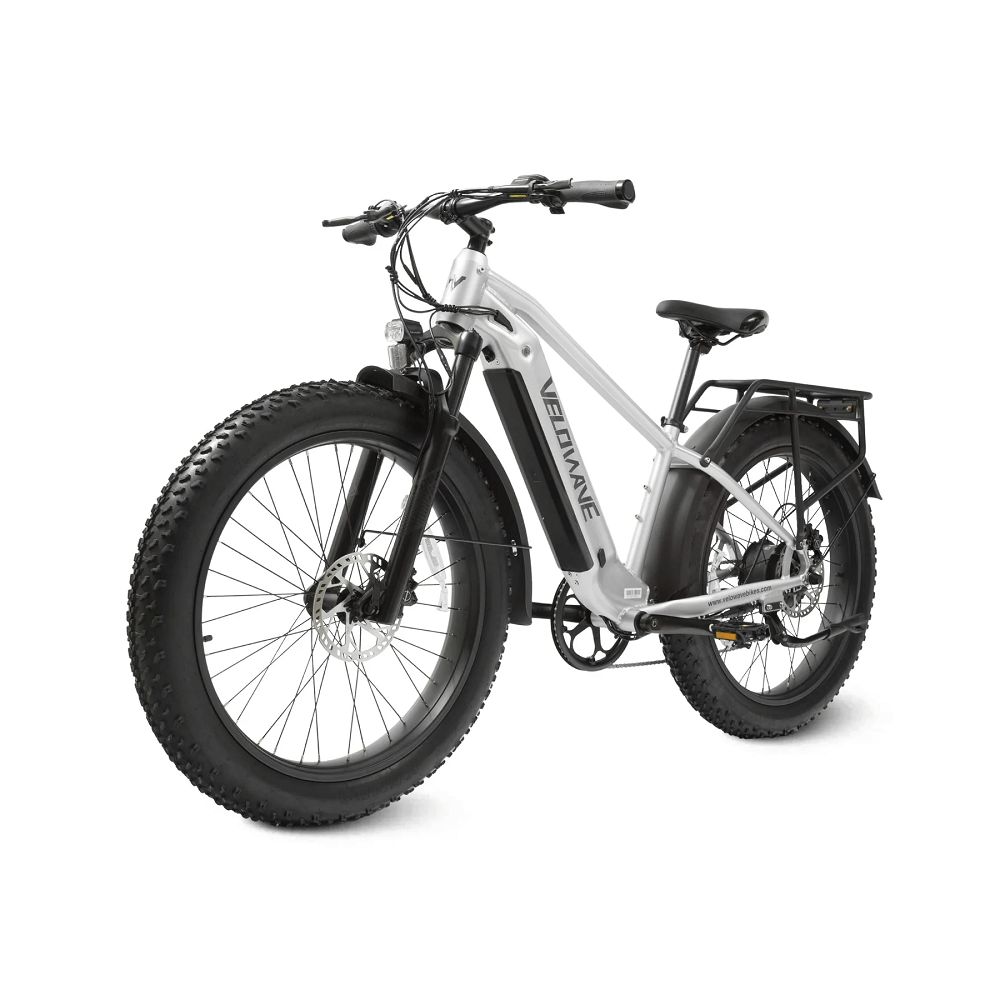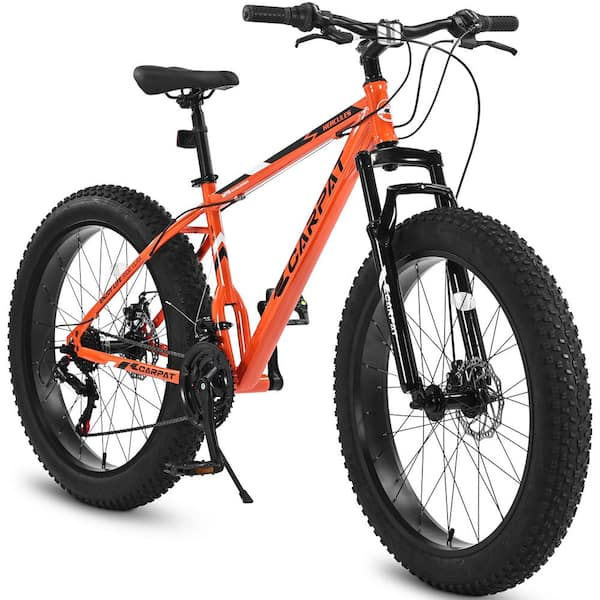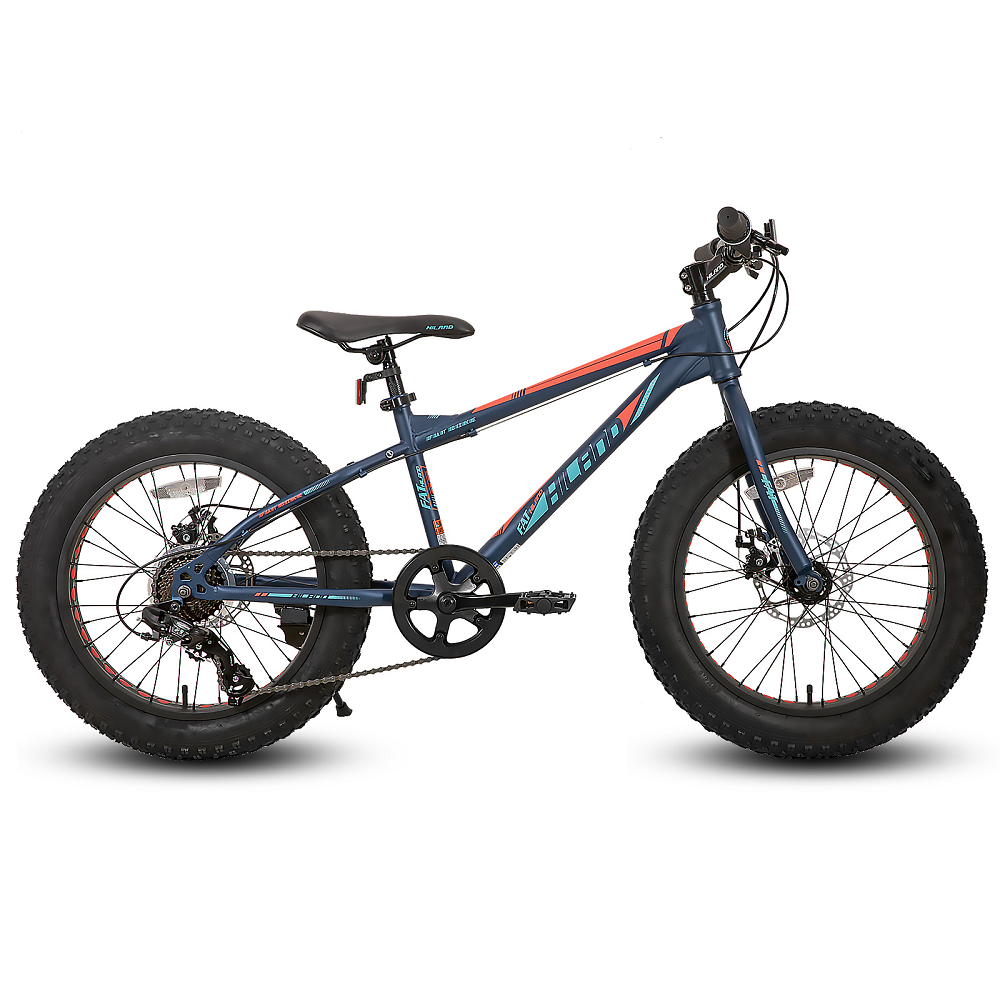When it comes to outdoor adventures, the fat tire bicycle has emerged as an exciting option for many cycling enthusiasts. These unique bikes have gained popularity for their ability to tackle diverse terrains. Whether you’re biking through sandy beaches, snowy trails, or rocky paths, fat tire bicycles offer a versatile and stable ride. But why exactly are these bikes so appealing? Let’s dive deeper into their features, benefits, and how they take cycling to a whole new level.

What is a Fat Tire Bicycle?
A fat tire bicycle has wide tires, typically measuring 3.5 inches or more. These tires provide a larger surface area that offers better stability and traction. They are often made of durable rubber and come with various tread patterns. This wide tire design allows cyclists to ride on soft or loose surfaces, which traditional bikes might struggle to navigate.
Fat tire bicycles are equipped to tackle various terrains. Cyclists often take these bikes out on snow, sand, gravel, or dirt trails. Their stability gives confidence to riders who might be hesitant about tackling difficult paths. The fat tire design keeps the bike from sinking into softer surfaces. Instead, it glides over them, making it easier to maintain momentum.
There are several styles of fat bicycles, from mountain bikes to beach cruisers. Even electric versions exist. Each type caters to different riders’ needs and preferences. Mountain fat bikes often feature rugged frames and suspension systems for off-road adventures. Beach cruisers provide a more laid-back experience, perfect for leisurely rides by the coast.
The Benefits of Riding Fat Tire Bicycles
Stability and Traction
One of the main advantages of a fat tire bicycle is its superior stability. The wide tires allow more contact with the ground. This increased surface area offers better grip and traction, even on challenging terrains. Riders can confidently navigate through loose gravel or snow without worrying about slipping or tipping.
Since these bikes grip the ground well, riders can also maintain better control. This control enhances the overall biking experience. Whether making tight turns or navigating steep trails, riders will find the fat tire design advantageous. It encourages riders to go further and explore more challenging paths. The ability to conquer different terrains can significantly boost a cyclist’s confidence.
Comfort on the Ride
Another significant benefit is comfort. The added width of the tires acts as a natural suspension system. With the right fat tire bicycle, bumps and rough roads feel less jarring. This means longer rides become more enjoyable. Even when cycling over rocky trails, the bike absorbs the shocks more efficiently.
Fat tire bicycles also tend to have more comfortable seating. Many come equipped with wider saddles that accommodate longer rides. Riders can spend hours on their bikes without feeling fatigued. This comfort is essential for both recreational cyclists and serious mountain bikers.
Versatility in Usage
Fat tire bicycles are incredibly versatile. Whether you want to mountain bike, ride on sandy beaches, or pedal through snow, these bikes can tackle it all. This adaptability makes them an excellent investment for cyclists. Riders don’t need multiple bikes for different terrains. One fat tire bicycle can handle it all.
They are also great for commuting. Cyclists can ride easily on city sidewalks or biking paths. The fat tires help to navigate gravel roads or even potholes on city streets. This flexibility means that you can use your fat tire bicycle for various purposes. It is perfect for those who enjoy cycling as both a hobby and a form of transportation.
Choosing the Right Fat Tire Bicycle
Consider Your Riding Style
When choosing a fat tire bicycle, think about how you plan to use it. Are you aiming for off-road adventures? Or do you just want a bike for leisurely rides on the beach? Understanding your needs will help narrow down your options. Look for specific features that cater to your riding style.
If you want to ride on rugged mountain trails, consider a model with additional suspension. This feature will enhance comfort on rough paths. If you’re mainly riding on beaches, a lighter model may be more suitable. Catching the breeze and enjoying the waves might require a different design than aggressive mountain biking.
Material Matters
The frame material significantly impacts bike performance. Steel frames are typically sturdy, offering durability and a smooth ride. However, they can be heavier. Aluminum frames, on the other hand, are lightweight and easier to travel with. They provide excellent performance and are great for various terrains.
Carbon fiber frames are the lightweight champions, offering speed and agility. However, they can also be more expensive. For those serious about biking, investing in a high-quality carbon fiber frame may pay off. Consider your budget when selecting the frame material for your fat tire bicycle.
Test Ride Before You Buy
Always test ride a bike before purchasing it. Different brands and models feel different. Ride the bike on various terrains if possible. Pay attention to how comfortable you feel during the ride. Check if you can handle the bike well and maneuver easily. This step is crucial in finding a bike that meets your expectations and needs.
Maintenance Tips for Fat Tire Bicycles
Regular Cleaning and Inspection
Taking care of your fat tire bicycle helps maintain its performance. Cleaning your bike after each ride can prevent dirt and grime buildup. This cleaning is especially important if you ride in muddy or sandy conditions. Keep the frame, tires, and gears clean for better longevity.
Regularly inspect the tires for wear and tear. Flat tires or low pressure can lead to unpleasant rides and reduced traction. Always check the tread pattern to ensure optimal performance. If you find any damage, address it before your next ride. A well-maintained bike is safer and more enjoyable to ride.
Lubricate Moving Parts
Another essential maintenance task is lubrication. The moving parts of your fat tire bicycle, such as the chain and gear mechanisms, need regular lubrication. This step helps to ensure smooth shifts and prolongs the life of the components. Use bike-specific lubricants for the best results.
Don’t overdo it, though. Too much lubricant can attract dirt. Apply a thin layer and wipe away any excess. This small maintenance step can make a big difference in your bike’s performance. Paying attention to these details helps keep your bike in top condition.
Seasonal Preparation
Depending on the season, your fat tire bicycle may need special preparation. In winter, ensure your bike is adapted for icy or snowy conditions. You may want to consider tire studding for added grip. Similarly, prepare your bike for summer riding by checking tire pressures and cooling off your brakes.
Always store your bike properly. Keep it in a dry place away from extreme temperatures. This helps prevent rust and damage. Investing the time in seasonal maintenance ensures you are always ready for your next adventure.
Riding Techniques for Fat Tire Bicycles
Braking and Control
When biking on different terrains, your braking technique may need adjustment. A fat tire bicycle’s wide tires provide excellent grip, so you can brake confidently. However, it’s crucial to distribute your weight correctly when braking. Leaning back can prevent you from flipping over the handlebars, especially on steep descents.
Practice emergency stops. Familiarize yourself with how firmly you need to brake on various surfaces. An understanding of your bike’s balance will help you make quick adjustments on the fly. As you gain experience, braking will become second nature during your rides.
Cornering Skills
Cornering is another skill to master on a fat tire bicycle. The stability offered by fat tires can often lead to overconfidence. While it’s easy to take turns quickly, it’s essential to maintain control. Lean into the turn and adjust your body weight. This center of gravity adjustment allows for a smoother ride.
Practice cornering techniques on different surfaces. Navigate through tight turns and wide corners. Understanding how your bike behaves in various environments will make you a more confident rider. Cornering well will enhance your overall biking experience.
Climbing and Descending
Climbing and descending are two fundamental aspects of mountain biking. With a fat tire bicycle, climbing steep inclines can be easier due to improved traction. Shift your weight forward while pedaling to maintain balance. Finding the right gear will also enhance your ability to climb effectively.
Descending can be thrilling, but it also requires caution. Avoid going too fast, especially on rocky trails. Shift your weight back to keep control. A firm grip on the handlebars will give you the confidence you need during descents. Practice makes perfect, so take the time to work on these techniques.
Enjoying the Fat Tire Bicycle Lifestyle
Organizing Group Rides
One of the most enjoyable aspects of cycling is sharing experiences with friends. Organizing group rides can enhance the cycling lifestyle. Invite friends to join in on bike adventures, explore new trails, and create lasting memories. Establishing a group ride can foster a sense of community among cyclists.
When planning a group ride, consider everyone’s skill levels. Choose a route that accommodates various capabilities. This ensures everyone enjoys the ride. Don’t hesitate to tackle challenging trails as a group. Supporting each other will make the experience even more gratifying.
Exploring New Trails
Fat tire bicycles offer you the freedom to explore new and diverse trails. Make a bucket list of destinations to visit. Research local parks, trails, and scenic routes that accommodate fat tire biking. Don’t be afraid to venture into areas you’ve never been before.
If you’re unsure where to go, consider joining local biking clubs. Many clubs have planned rides you can join. These groups often know the best local trails and hidden gems. Exploring new places will keep your rides exciting and fresh.
Engaging with the Cycling Community
Becoming part of the cycling community can add joy to your biking experience. Attend cycling events and meet other enthusiasts. Use social media to find cycling groups and communities. Sharing your experiences and learning from others can deepen your appreciation for fat tire biking.
Engaging in discussions about bike maintenance, riding techniques, and local trails will expand your knowledge. You may find friends who share your passion and who you can ride with regularly. Together, you can encourage each other and celebrate your achievements.
Embracing the Outdoors with Fat Tire Bicycles
Connecting with Nature
Cycling is a wonderful way to connect with nature. Fat tire bicycles allow you to reach remote areas that may not be accessible by traditional bikes. Ride through forests, fields, and along coastlines. Each time you cycle, you immerse yourself in the sights and sounds of nature.
Taking time to appreciate your surroundings enhances your ride. Stop and observe wildlife, enjoy scenic viewpoints, or take photos along the way. Nature provides a beautiful backdrop that enriches your cycling experience. The combination of biking and exploring the outdoors creates a fulfilling lifestyle.
Health Benefits of Biking
Riding a fat tire bicycle has numerous health benefits. It encourages cardiovascular fitness, improves muscle strength, and enhances flexibility. Regular cycling can lead to better mental health as well. The combination of exercise and fresh air can reduce stress and enhance mood.
Make cycling part of your weekly routine. Whether you ride for fun or fitness, you will notice the benefits over time. Set personal fitness goals and track your progress. Celebrate your achievements, and keep challenging yourself. Riding should be an enjoyable journey.
Environmental Impact
Choosing a fat tire bicycle as a mode of transportation also has environmental benefits. Cycling reduces the carbon footprint compared to driving a car. By opting for a bicycle, you contribute to a cleaner planet while enjoying your ride. More people are turning to bikes for commuting, which eases traffic congestion and pollution.
Encourage others to join the cycling movement. Share your experiences and insights to inspire those around you. Emphasize the environmental advantages of biking. Together, communities can make a significant impact by adopting sustainable transportation methods.
Conclusion
Fat tire bicycles provide a unique riding experience that opens doors to new adventures. From their stability and comfort to the many terrains they can conquer, these bikes are suitable for everyone. Whether you’re a beginner or an experienced cyclist, there are countless opportunities for exploration and enjoyment.
Choosing the right bike, keeping it well-maintained, and practicing good riding techniques are essential to a rewarding experience. Explore the outdoors, connect with nature, and enjoy the health benefits of cycling. Join the cycling community, engage in group rides, and share your passion with others.
Embrace the fat tire bicycle lifestyle and embark on new adventures today. Whether you’re biking on snow, gravel, or sand, every ride is a chance to discover something new. Get ready for the thrill and enjoyment that fat tire bicycles can bring. Happy cycling!




